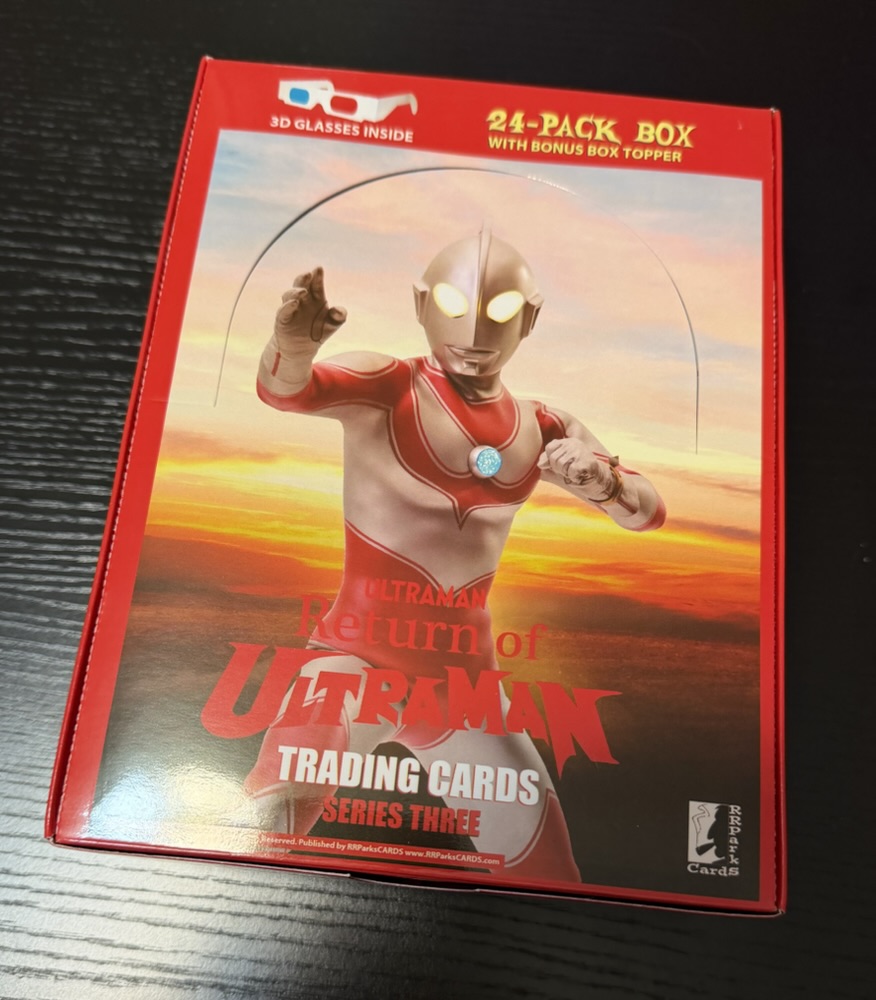
This is the third series of Ultraman cards from RRParks, which once again I got via Kickstarter. This set covers the third Ultraman series, ‘The Return Of Ultraman’ which these days is called Ultraman Jack. The box has been aging in a closet for over a year now, and it was finally time to open it!
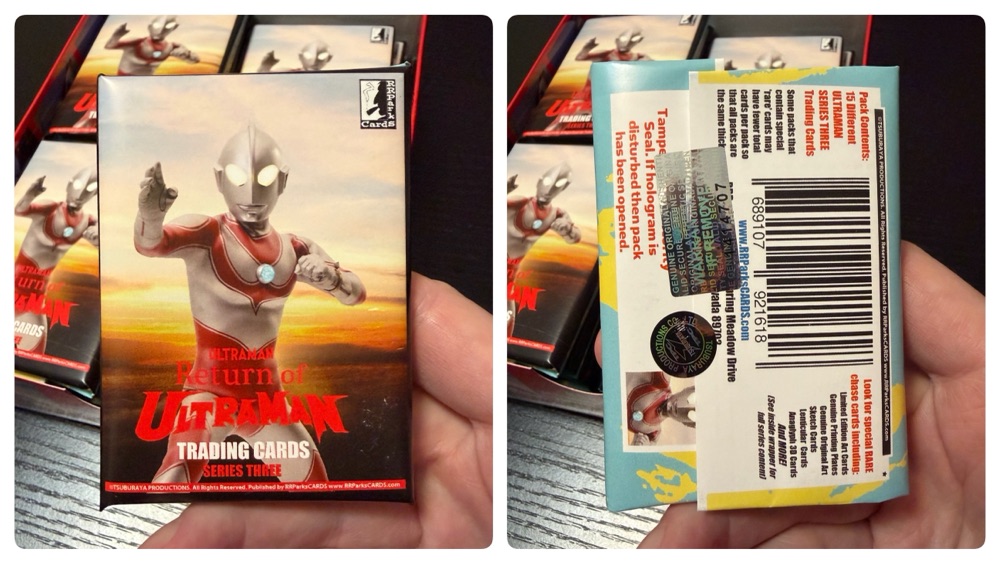
The Kickstarter sold out instantly (almost literally: it reached its funding budget in under a half hour) and I’m still amazed that the best Ultraman card sets ever come from a small independent American company (which may even be a single man)!
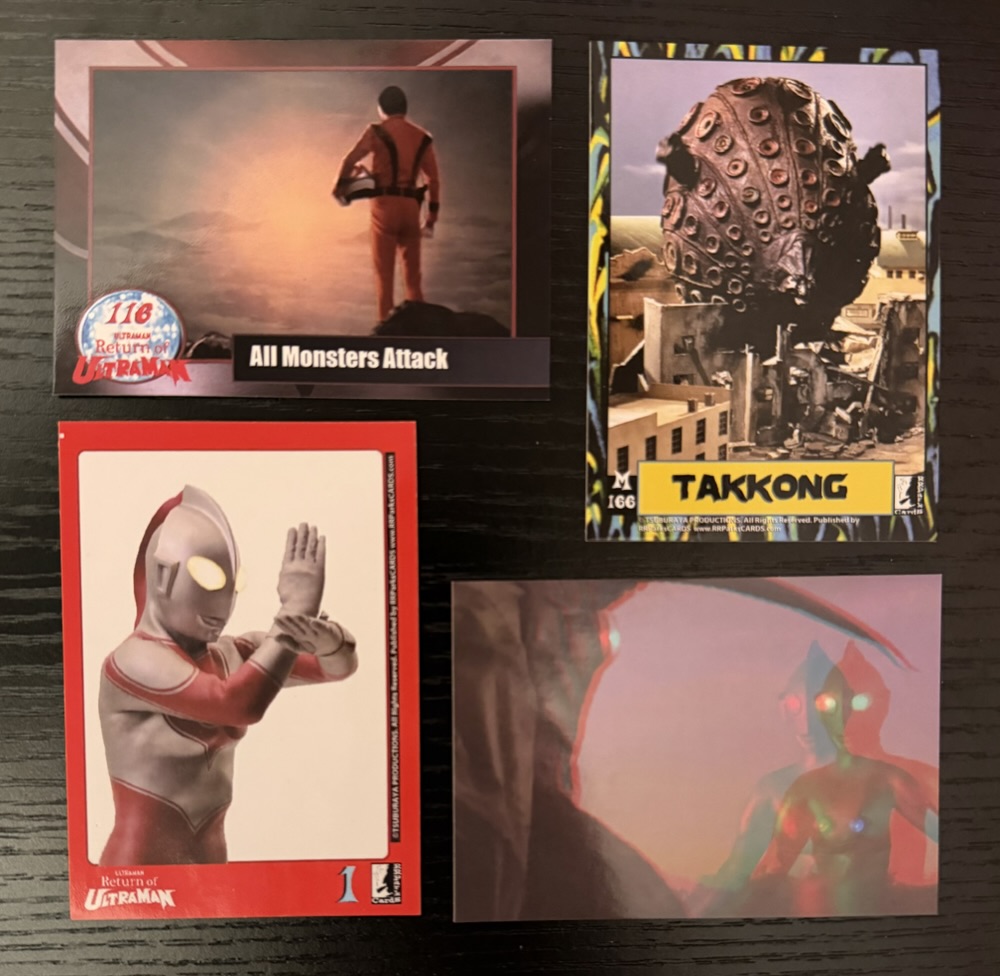
As with previous sets about a half of the 300-odd cards in the set are story cards, kaiju (monster) cards and reproductions of the original art cards. These are all done well, and once again I’m impressed by the quality of the summaries on the backs of the story cards (one for each episode).

There are four subsets of art cards by the same artists. Included in each box are full sets of most of the cards, but the special chase cards (like the pearlescent art cards in the lower left) are not guaranteed.
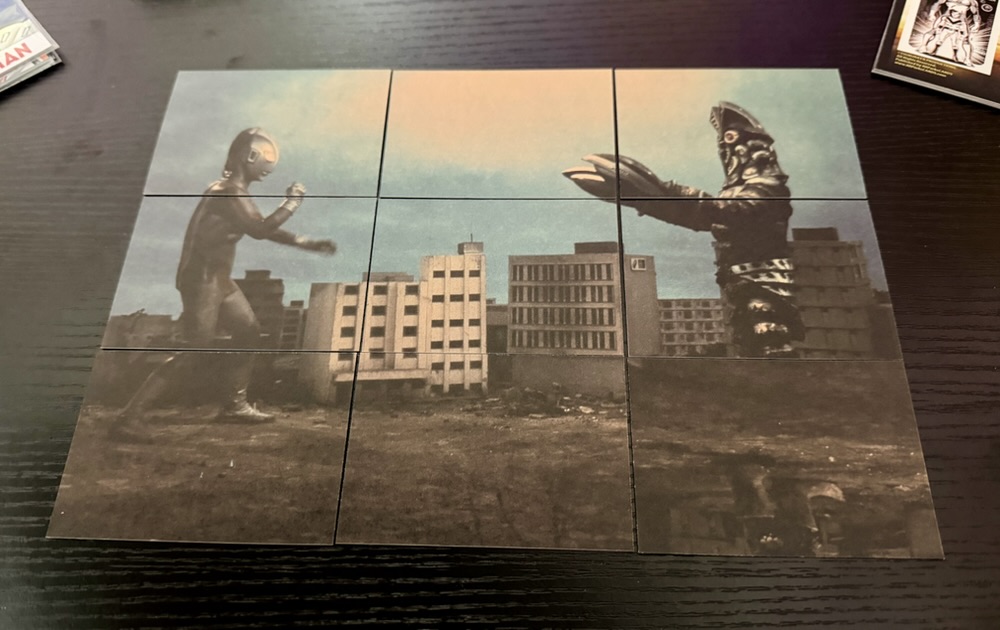
The kaiju cards have puzzles on the back, and there’s six different puzzles in total. There’s also a subset of 3D puzzles which I didn’t complete in my box:

Speaking of 3D, once again the box came with a set of glasses to view the 18 different 3D cards:
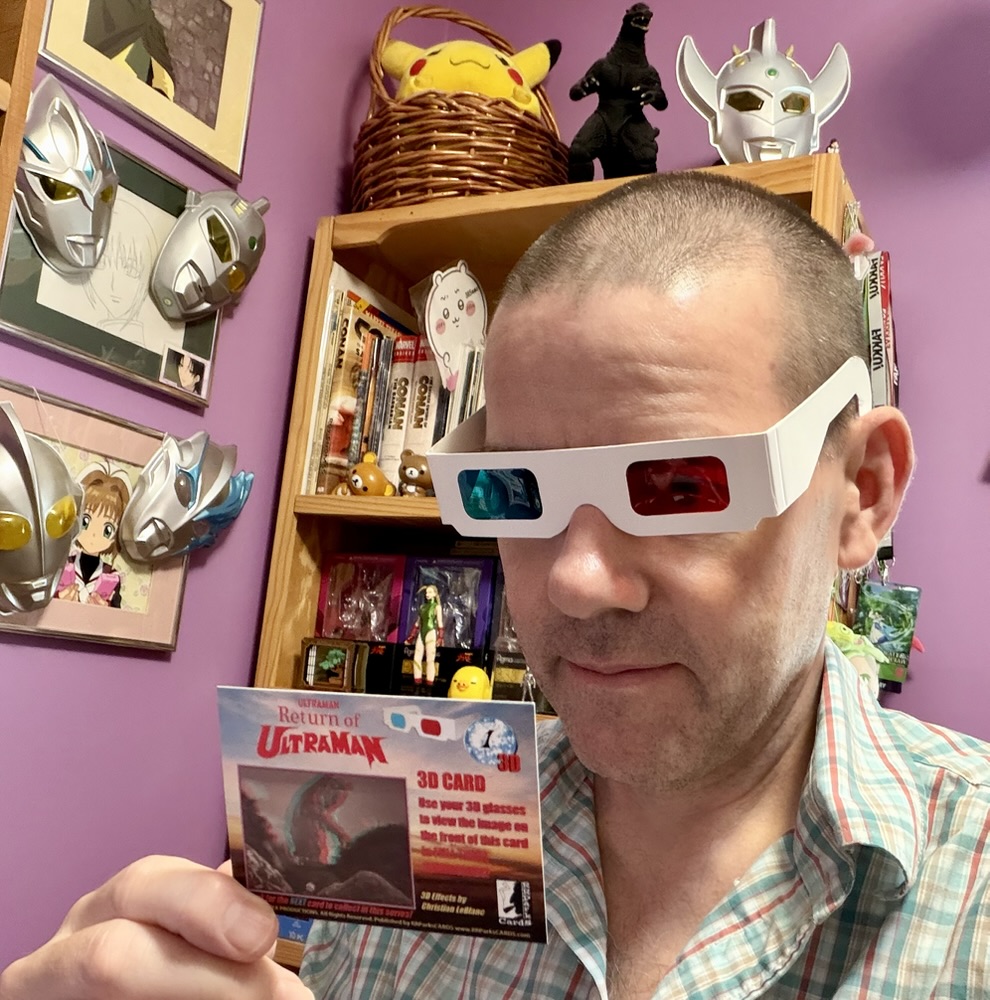
These are well done and the 3D effect is very good. This technology may be old these days, but it’s still effective and I think more card sets should use it.
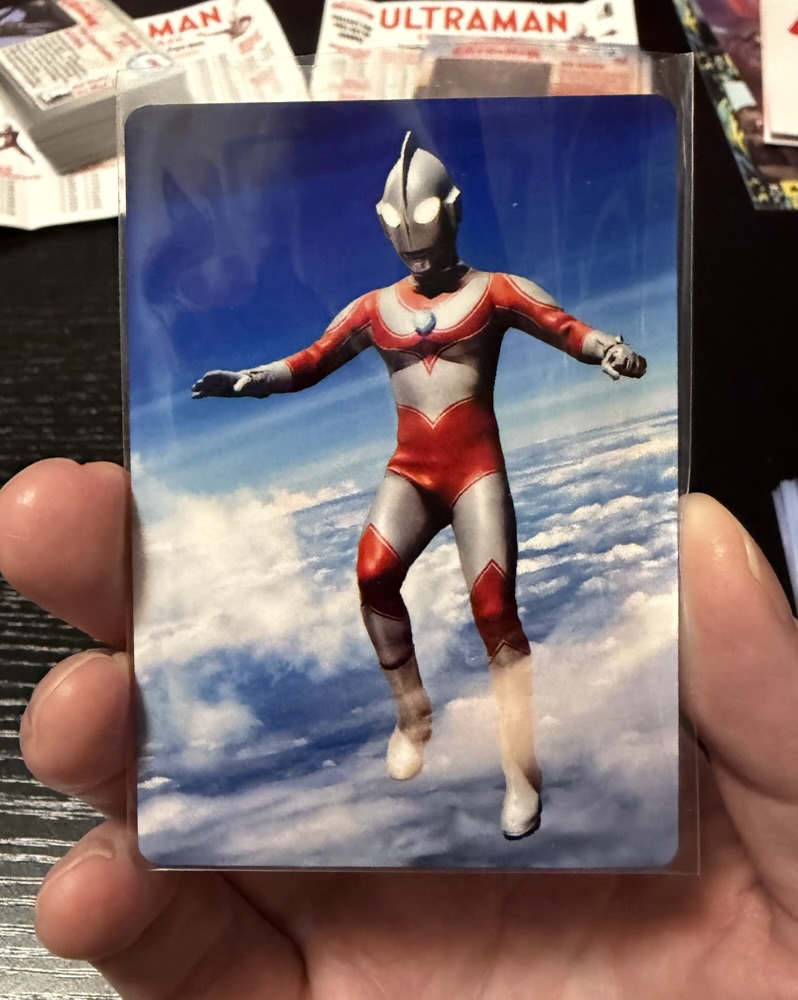
As far as chase cards go, I hit the lottery with this box, getting far more limited cards than in my boxes for series one or two (which I didn’t blog). My metal card is shown above, and shows a nice render of Jack flying in the sky.
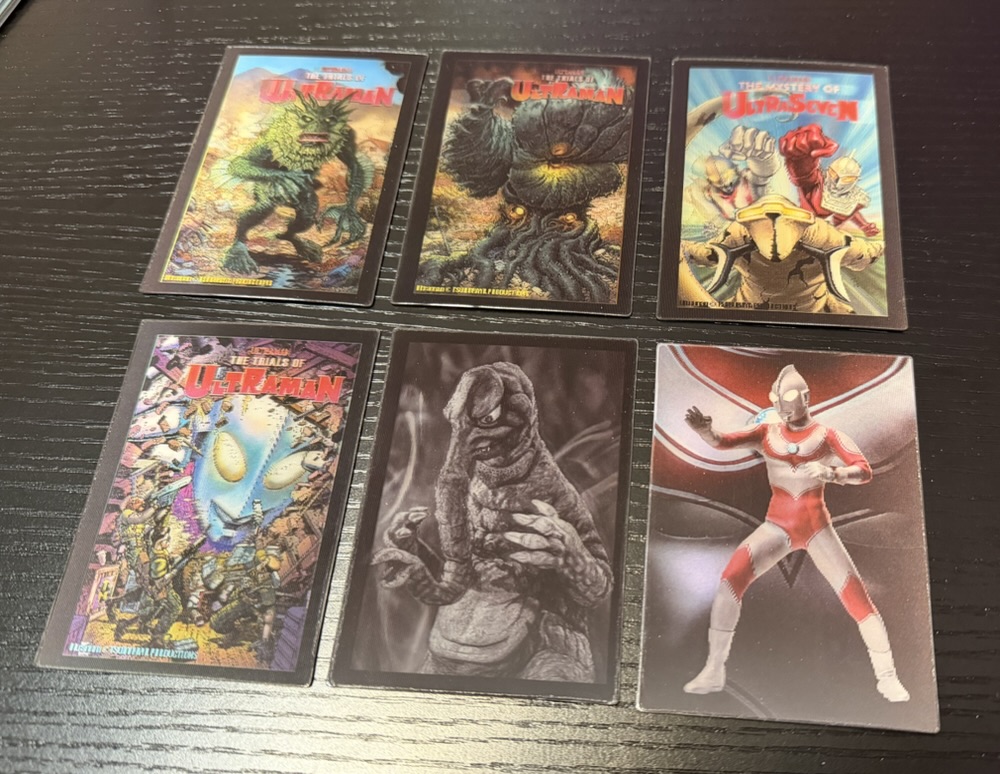
I got half of the 12 lenticular cards (compared to only one in my previous box), and one ‘Jumbo lenticular’ was included as a box topper:
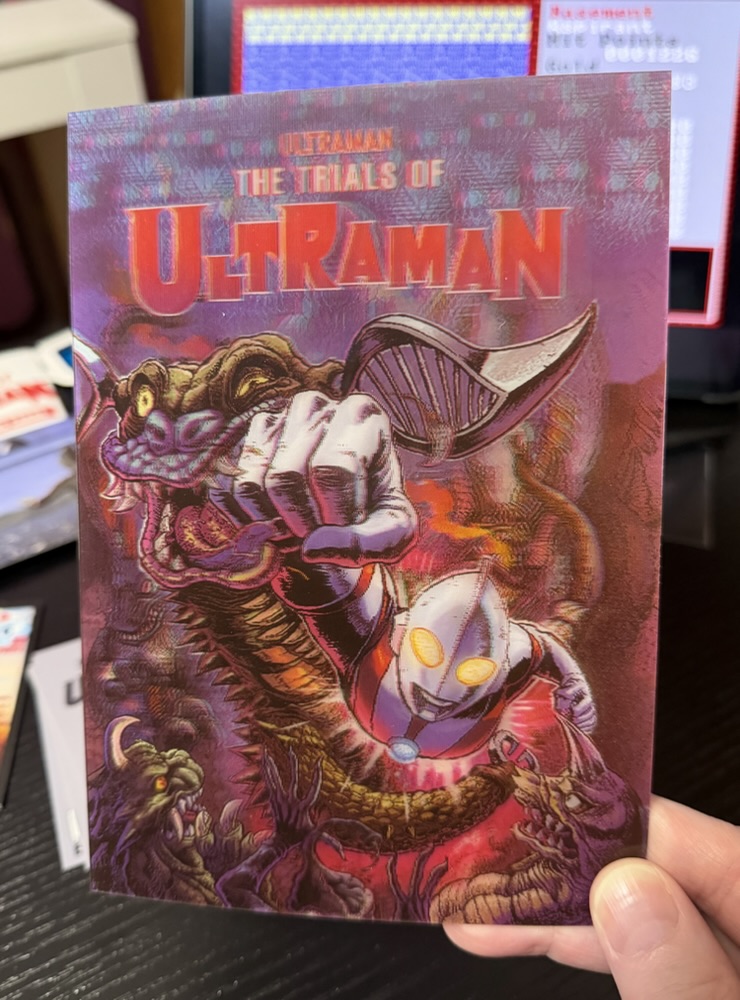
I also got two printing plates, which are the actual metal plates used to print the cards. In each case I got black ink plates, one for card 124 of the story set and one for the back of one of the 3D cards. Here they are shown alongside the cards they were used to print:
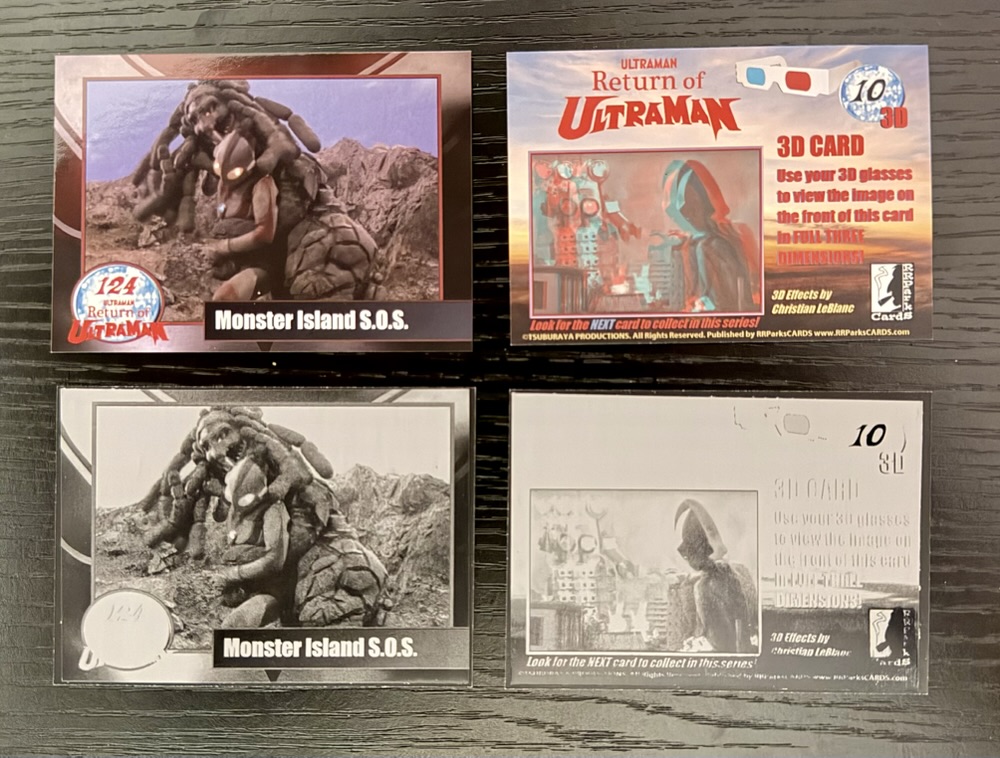
I find these fascinating, since I assume the cards are printed in large sheets and therefore the printing plates must be cut before being included in packs. Each plate is of course unique, but I wonder how many exist in total?
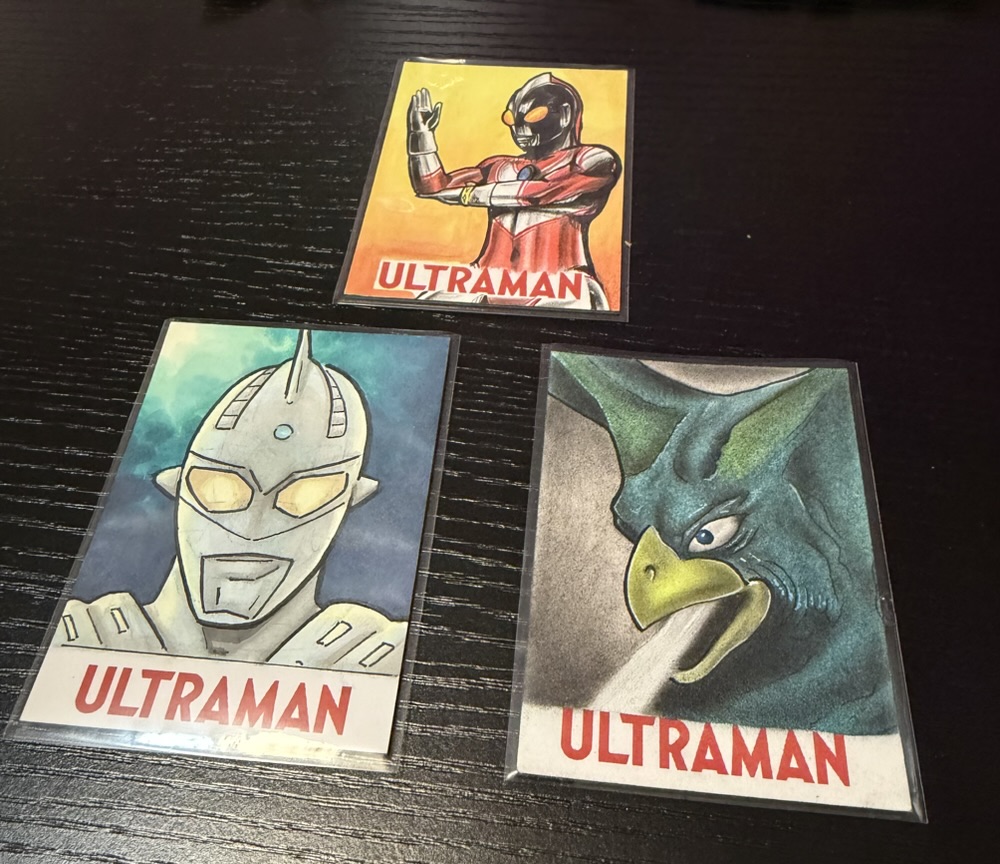
I was very lucky to get three original art cards. These are blank cards on which artists have drawn or painted an ultra character, and the three I got are shown above.
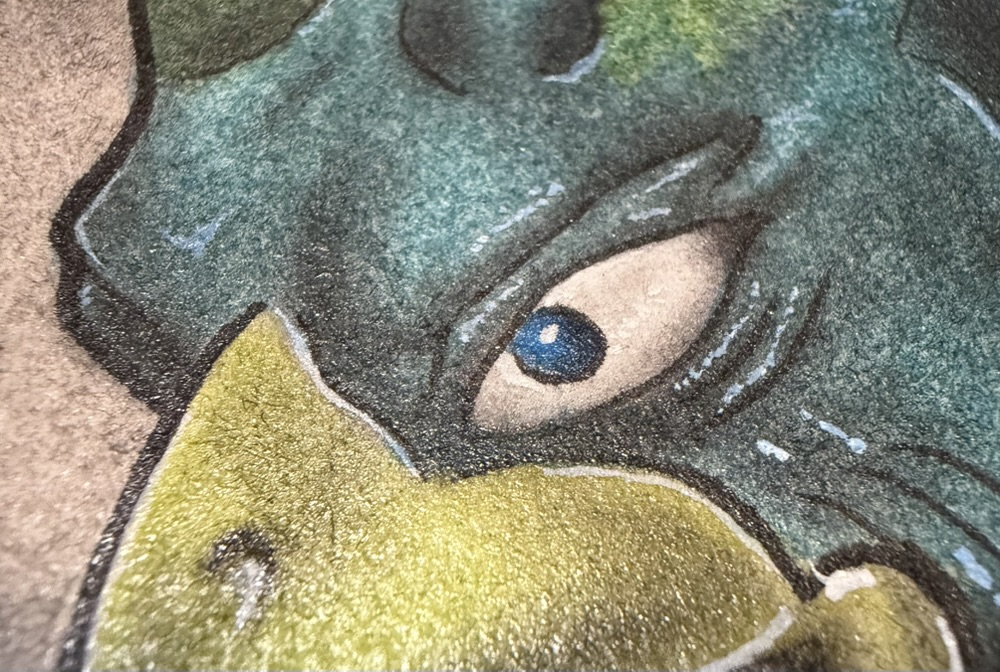
The one in bottom right is most impressive and seems to have been painted with some sort of textured paint. These are of course all unique, and since none of my three are included in the reduction art cards, I’m sure there’s a lot of them. I wonder how many?
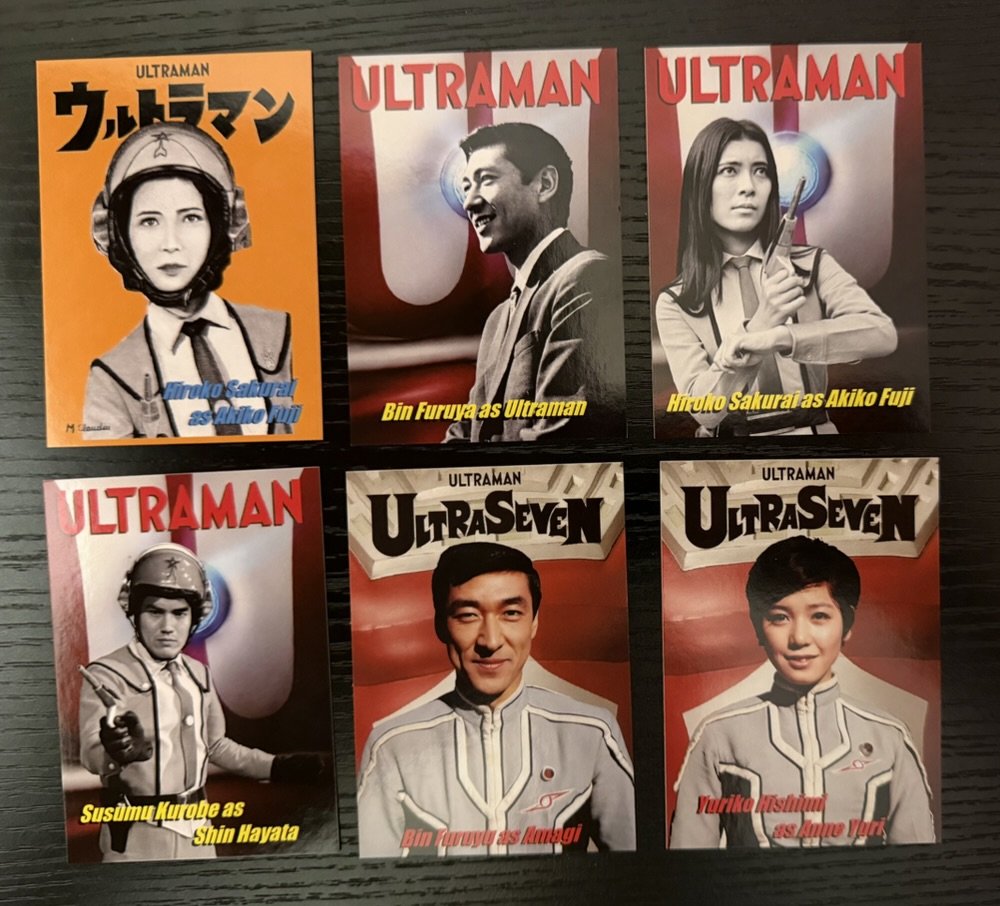
The rarest type of card is the autograph, and once again I’m amazed a tiny independent American card manufacturer was able to get stars from this 60-year-old series to sign cards. They are extremely rare though – I read some are limited to fewer than 5 cards – and I believe they’re only included in cases of multiple boxes, which makes sense.
This is a great card set and I had a lot of fun opening it. As it turns out the impetus to do so was the arrival of my series four box, which will now sit waiting in a closet until next years (presumed) series five 🙂

























